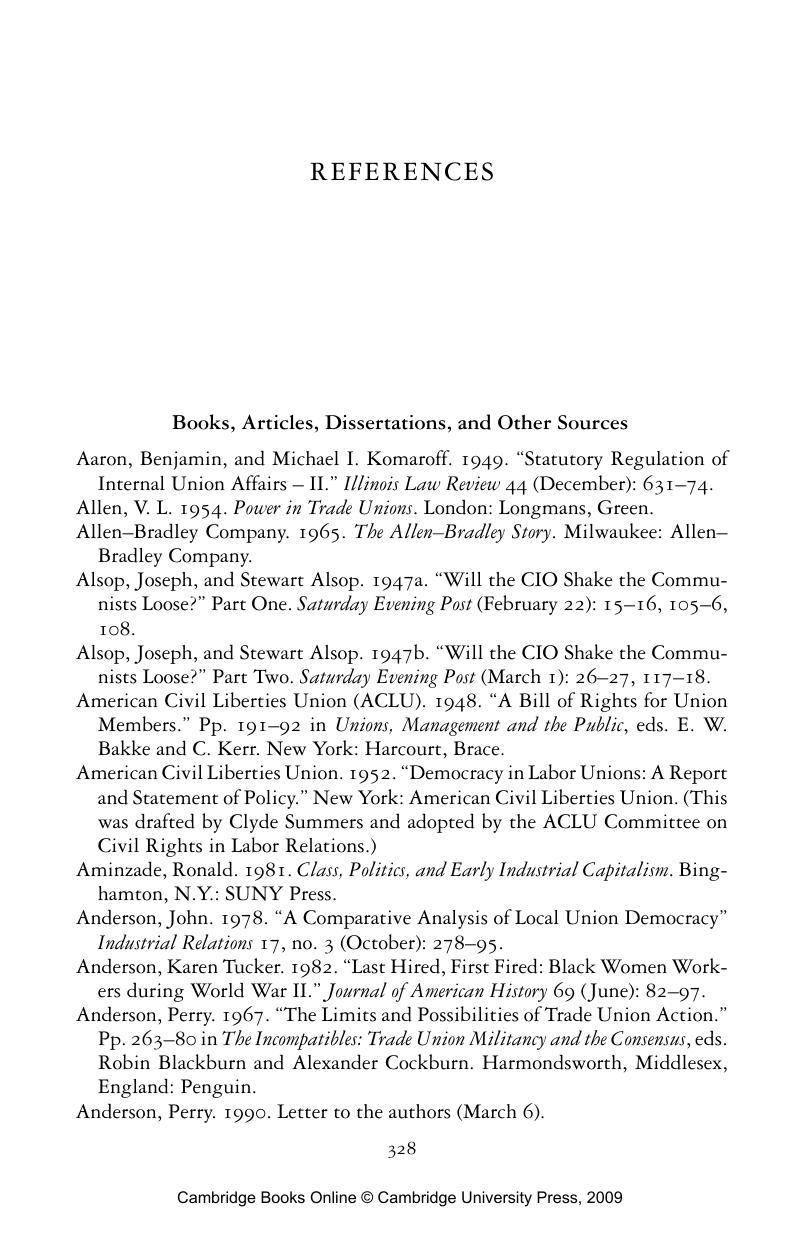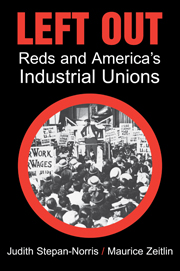Book contents
- Frontmatter
- Contents
- List of Figures and Tables
- Prefatory Note
- Acknowledgments
- Abbreviations
- 1 The Congress of Industrial Organizations: Left, Right, and Center
- 2 “Who Gets the Bird?”
- 3 Insurgency, Radicalism, and Democracy
- 4 Lived Democracy: UAW Ford Local 600
- 5 “Red Company Unions”?
- 6 Rank-and-File Democracy and the “Class Struggle in Production”
- 7 “Pin Money” and “Pink Slips”
- 8 The “Big 3” and Interracial Solidarity
- 9 The Red and the Black
- 10 Conclusion: An American Tragedy
- 11 Epilogue: The “Third Labor Federation” That Never Was
- References
- Author Index
- Subject Index
- References
References
Published online by Cambridge University Press: 28 July 2009
- Frontmatter
- Contents
- List of Figures and Tables
- Prefatory Note
- Acknowledgments
- Abbreviations
- 1 The Congress of Industrial Organizations: Left, Right, and Center
- 2 “Who Gets the Bird?”
- 3 Insurgency, Radicalism, and Democracy
- 4 Lived Democracy: UAW Ford Local 600
- 5 “Red Company Unions”?
- 6 Rank-and-File Democracy and the “Class Struggle in Production”
- 7 “Pin Money” and “Pink Slips”
- 8 The “Big 3” and Interracial Solidarity
- 9 The Red and the Black
- 10 Conclusion: An American Tragedy
- 11 Epilogue: The “Third Labor Federation” That Never Was
- References
- Author Index
- Subject Index
- References
Summary

- Type
- Chapter
- Information
- Left OutReds and America's Industrial Unions, pp. 328 - 367Publisher: Cambridge University PressPrint publication year: 2002



